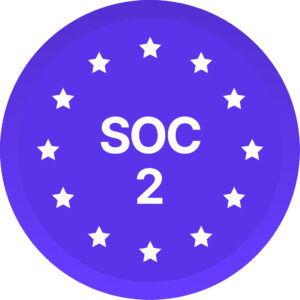How the 2025 FAA controversy reveals why strong cultural accountability isn’t optional in high-stakes industries
Culture failures don’t announce themselves with fanfare. They begin quietly: concerns brushed aside, power imbalances ignored, feedback channels that lead nowhere. Over time, these small fractures compound until one dramatic moment — a tragedy, a whistleblower, a crisis — forces everything into the harsh light of public scrutiny.
The aviation industry experienced exactly this phenomenon in January 2025, when a mid-air collision near Washington, D.C. became the catalyst for a sweeping political attack on diversity, equity, and inclusion (DEI) programs at the Federal Aviation Administration. Within hours of the tragedy, political leaders speculated that DEI hiring practices might have contributed to the disaster — despite no evidence connecting diversity initiatives to the incident. An executive memorandum soon followed, ending DEI programs in aviation and directing reviews of hiring protocols.
Industry professionals, disability advocates, and safety experts pushed back strongly, calling the claims baseless and counterproductive to actual safety work. But the damage was done. A tragic accident had become a cultural and political flashpoint, revealing a deeper truth: in high-stakes industries, culture isn’t a “soft” issue, it’s a strategic vulnerability that requires the same rigor as any other risk management discipline.
The Anatomy of Cultural Exposure
This episode follows a predictable pattern we see across industries when cultural accountability is weak:
The Trigger: A real crisis occurs (the crash itself was tragic and required thorough investigation)
The Leap: Within hours, speculation replaces investigation, and cultural practices become scapegoats
The Weaponization: Policy shifts happen rapidly, often without connection to evidence or root cause analysis
The Fallout: Institutions find themselves defending programs reactively instead of proactively demonstrating their value
What made this particularly striking was the speed. A safety investigation that should have focused on technical factors, weather conditions, communication protocols, and operational procedures was immediately overshadowed by unfounded cultural blame.
For organizations in regulated industries i.e. aviation, healthcare, energy, finance, this sequence should sound familiar. When cultural accountability is absent or unclear, culture itself becomes ammunition in any crisis.
Separating Safety Myths from Evidence
The central claim underlying the FAA controversy — that diversity hiring compromises safety — deserves examination based on evidence, not speculation.
The Myth: DEI Equals Lower Standards
The fear is straightforward: emphasis on representation might lead to accepting less qualified candidates, particularly in safety-critical roles.
This fear ignores how aviation actually works. Pilots, air traffic controllers, mechanics, and engineers must pass rigorous, standardized screening regardless of their background. The Federal Aviation Administration maintains strict certification requirements, performance evaluations, and ongoing training mandates. These standards don’t change based on who meets them.
As Chai Feldblum, former commissioner of the U.S. Equal Employment Opportunity Commission during both the Obama and first Trump administrations, explained: “Obviously you only hire a person with a disability to do a job for which they’re qualified. I’ve seen no evidence that there are people with intellectual disabilities that have been hired to be air traffic controllers.” (Source)
Critics who claim DEI compromises safety often rely on speculation rather than documented causation. No credible evidence links diversity initiatives to safety failures in aviation.
The Reality: Inclusion Strengthens Performance
Research consistently shows that diverse teams outperform homogeneous ones in complex decision-making, risk detection, and error identification. In aviation, where split-second decisions and clear communication can mean the difference between safety and catastrophe, these advantages aren’t theoretical — they’re operational necessities.
More importantly, inclusion creates psychological safety, the confidence to speak up when something seems wrong. This is foundational in high-reliability organizations. A maintenance technician who notices an unusual sound, a controller who questions a clearance, a pilot who raises concerns about weather; these moments of speaking up prevent accidents. They require a culture where people feel safe to voice concerns regardless of their background or position in the hierarchy.
Industry groups recognized this immediately. As Nick Daniels, head of the National Air Traffic Controllers Association, stated: “America’s highly trained and skilled air traffic controllers all do amazing work every day keeping the nation’s passengers and cargo moving safely and efficiently to their destinations.” Aviation professionals condemned the administrations’ remarks not just as unfair, but as fundamentally misunderstanding how safety culture works.
The Complexity: Accountability Still Matters
This doesn’t mean all DEI programs are automatically effective. Like any organizational initiative, diversity efforts require clear governance, transparent processes, and measurable outcomes. When DEI programs lack accountability or are perceived as compromising standards, they create their own risks — not to safety, but to organizational trust and cohesion.
The key distinction: diversity itself doesn’t create risk, but poorly implemented diversity programs can. This is why cultural accountability matters so much in high-stakes environments.
The Hidden Costs of Cultural Fragility
When organizations fail to build accountable, resilient cultures, they face risks that extend far beyond any single crisis:
Strategic Risk
Reactive cultures bend under external pressure instead of maintaining consistent principles. The FAA’s immediate policy reversal in response to political pressure, before investigation findings were available, exemplifies how cultural weakness can force strategic decisions based on optics rather than evidence.
Operational Risk
Weak cultures discourage the very behaviors that prevent accidents: reporting near-misses, questioning assumptions, escalating concerns. When people don’t feel psychologically safe or fairly treated, they’re less likely to speak up about problems they observe.
Reputational Risk
In an era of 24-hour news cycles and social media amplification, cultural failures become public relations crises within hours. Organizations without clear cultural narratives find others writing the story for them.
Legal and Regulatory Risk
Existing lawsuits or compliance issues can accelerate during crises. In the FAA case, a pending class action over diversity hiring practices gained renewed attention and media coverage following the controversy.
For airlines, hospitals, energy companies, and other organizations where failure can mean loss of life, these risks aren’t abstract, they’re existential.
Building Cultural Resilience in High-Stakes Industries
The solution isn’t to avoid cultural initiatives or controversy, it’s to build cultures strong enough to withstand scrutiny. This requires treating culture with the same systematic rigor applied to other mission-critical functions.
1. Embed Accountability at the Leadership Level
Culture can’t be delegated entirely to HR or relegated to side programs. It must be integrated into governance, risk management, and strategic decision-making processes.
- Make cultural metrics part of board reviews alongside financial and operational indicators
- Establish clear escalation paths for cultural concerns, similar to safety reporting systems
- Align leadership compensation and evaluation with cultural outcomes, not just cultural activities
2. Connect DEI to Core Operational Excellence
In aviation, this means explicitly linking inclusion to safety, communication effectiveness, decision-making quality, and operational performance. Frame diversity not as a parallel agenda, but as integral to mission success.
- Include cultural factors in incident investigations and safety reviews
- Integrate inclusion metrics into performance dashboards
- Design training programs that connect cultural competency with technical excellence
3. Measure Continuously with Leading Indicators
Annual engagement surveys aren’t sufficient in high-risk environments where conditions change rapidly. Organizations need real-time cultural intelligence.
- Use pulse surveys to detect shifts in psychological safety and trust
- Track speaking-up rates and follow-through on escalated concerns
- Monitor retention and advancement patterns across different groups
- Correlate cultural data with operational outcomes and safety metrics
4. Build Narrative Strength Through Transparency
Organizations with strong cultural accountability don’t wait for crises to explain their approach. They proactively communicate their values, decision-making processes, and evidence for cultural initiatives.
- Regularly publish data on cultural initiatives and their connection to operational outcomes
- Use teachable moments (including external controversies) to reinforce organizational values
- Model transparency by acknowledging mistakes and showing how feedback influences change
What the FAA Controversy Teaches Us
The 2025 FAA episode offers several critical lessons for leaders in high-stakes industries:
- Speed Matters: Cultural narratives can shift in hours, not weeks. Organizations need crisis communication strategies that can respond rapidly while maintaining accuracy and integrity.
- Evidence is Essential: Claims about culture and performance must be backed by data, not speculation. Organizations that can’t demonstrate the connection between their cultural initiatives and operational outcomes become vulnerable to unfounded attacks.
- Political Pressure is Real: In regulated industries, cultural practices become political issues. This reality requires both stronger internal accountability and more sophisticated external communication.
- Unity Amplifies Voice: The aviation industry’s quick, unified response to the administrations’ claims demonstrated the power of collective professional standards. Individual organizations can learn from this example of coordinated, evidence-based pushback.
Moving Forward
The organizations that emerge strongest from cultural controversies are those that treat culture as a strategic asset requiring the same discipline as any other competitive advantage.
This means moving beyond compliance mindsets (“we have DEI programs”) to performance mindsets (“our inclusive culture drives measurable operational improvements”). It means connecting cultural health to business outcomes in ways that withstand scrutiny from regulators, media, and political pressure.
Most importantly, it means recognizing that in high-stakes industries, culture isn’t optional or secondary, it’s a core competency that can determine whether organizations thrive or merely survive when crisis hits.
The aviation industry will continue to face scrutiny over diversity, safety, and operational excellence. The organizations that build accountable, evidence-based cultures now will be the ones that shape that conversation rather than react to it.
For leaders across regulated industries, the choice is clear: either build cultural resilience with the same rigor applied to technical systems, or risk having others define your cultural narrative during your most vulnerable moments.
The stakes are too high for anything less.

